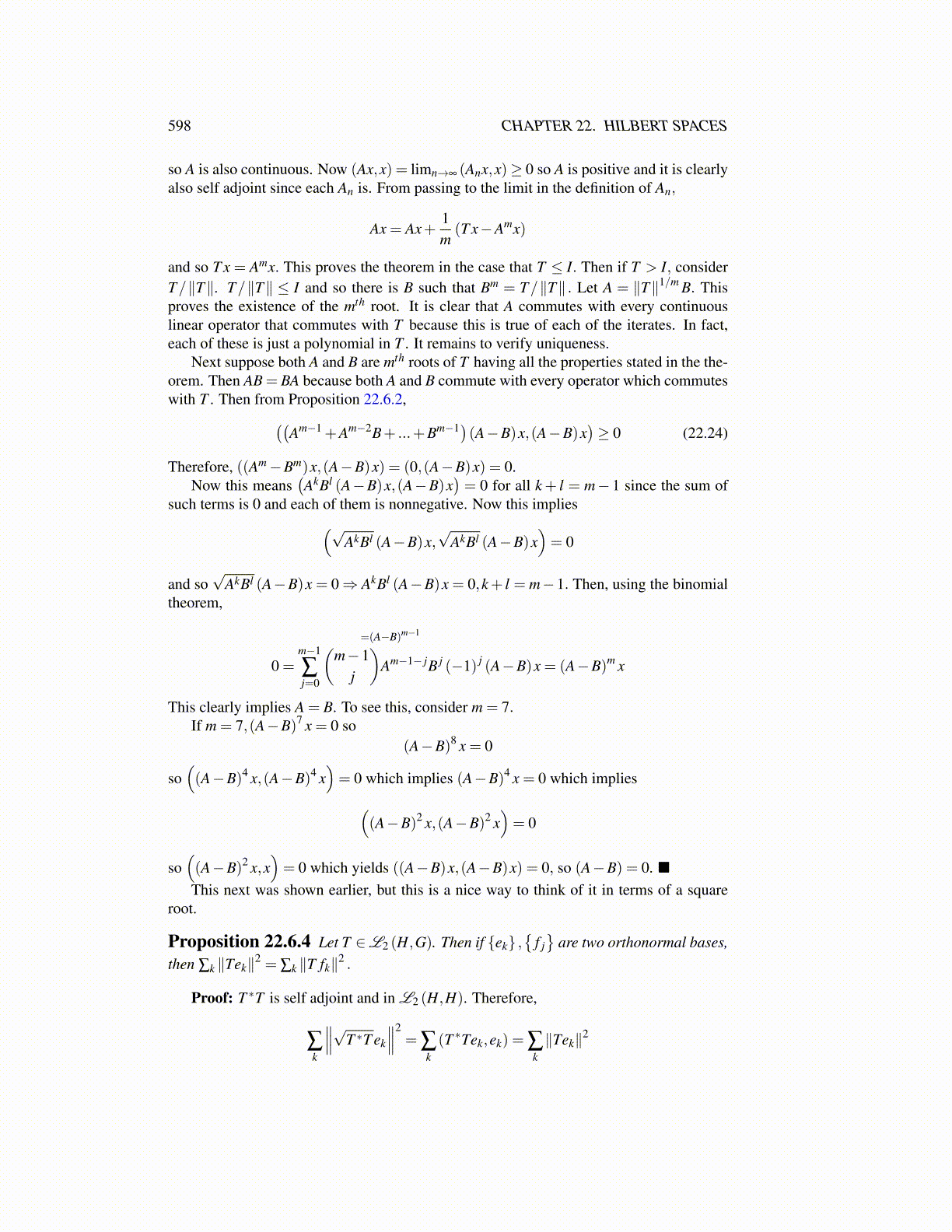
598 CHAPTER 22. HILBERT SPACES
so A is also continuous. Now (Ax,x) = limn→∞ (Anx,x)≥ 0 so A is positive and it is clearlyalso self adjoint since each An is. From passing to the limit in the definition of An,
Ax = Ax+1m(T x−Amx)
and so T x = Amx. This proves the theorem in the case that T ≤ I. Then if T > I, considerT/∥T∥. T/∥T∥ ≤ I and so there is B such that Bm = T/∥T∥ . Let A = ∥T∥1/m B. Thisproves the existence of the mth root. It is clear that A commutes with every continuouslinear operator that commutes with T because this is true of each of the iterates. In fact,each of these is just a polynomial in T . It remains to verify uniqueness.
Next suppose both A and B are mth roots of T having all the properties stated in the the-orem. Then AB = BA because both A and B commute with every operator which commuteswith T . Then from Proposition 22.6.2,((
Am−1 +Am−2B+ ...+Bm−1)(A−B)x,(A−B)x)≥ 0 (22.24)
Therefore, ((Am−Bm)x,(A−B)x) = (0,(A−B)x) = 0.Now this means
(AkBl (A−B)x,(A−B)x
)= 0 for all k+ l = m− 1 since the sum of
such terms is 0 and each of them is nonnegative. Now this implies(√AkBl (A−B)x,
√AkBl (A−B)x
)= 0
and so√
AkBl (A−B)x = 0⇒ AkBl (A−B)x = 0,k+ l = m−1. Then, using the binomialtheorem,
0 =
=(A−B)m−1
m−1
∑j=0
(m−1
j
)Am−1− jB j (−1) j (A−B)x = (A−B)m x
This clearly implies A = B. To see this, consider m = 7.If m = 7,(A−B)7 x = 0 so
(A−B)8 x = 0
so((A−B)4 x,(A−B)4 x
)= 0 which implies (A−B)4 x = 0 which implies(
(A−B)2 x,(A−B)2 x)= 0
so((A−B)2 x,x
)= 0 which yields ((A−B)x,(A−B)x) = 0, so (A−B) = 0. ■
This next was shown earlier, but this is a nice way to think of it in terms of a squareroot.
Proposition 22.6.4 Let T ∈L2 (H,G). Then if {ek} ,{
f j}
are two orthonormal bases,then ∑k ∥Tek∥2 = ∑k ∥T fk∥2 .
Proof: T ∗T is self adjoint and in L2 (H,H). Therefore,
∑k
∥∥∥√T ∗T ek
∥∥∥2= ∑
k(T ∗Tek,ek) = ∑
k∥Tek∥2